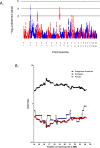Intrahepatic Cholestasis of Pregnancy (ICP) in U.S. Latinas and Chileans: Clinical features, Ancestry Analysis, and Admixture Mapping
- PMID: 26126184
- PMCID: PMC4488338
- DOI: 10.1371/journal.pone.0131211
Intrahepatic Cholestasis of Pregnancy (ICP) in U.S. Latinas and Chileans: Clinical features, Ancestry Analysis, and Admixture Mapping
Erratum in
-
Correction: Intrahepatic Cholestasis of Pregnancy (ICP) in U.S. Latinas and Chileans: Clinical features, Ancestry Analysis, and Admixture Mapping.PLoS One. 2015 Aug 28;10(8):e0137479. doi: 10.1371/journal.pone.0137479. eCollection 2015. PLoS One. 2015. PMID: 26317658 Free PMC article. No abstract available.
Abstract
In the Americas, women with Indigenous American ancestry are at increased risk of intrahepatic cholestasis of pregnancy (ICP), relative to women of other ethnicities. We hypothesized that ancestry-related genetic factors contribute to this increased risk. We collected clinical and laboratory data, and performed biochemical assays on samples from U.S. Latinas and Chilean women, with and without ICP. The study sample included 198 women with ICP (90 from California, U.S., and 108 from Chile) and 174 pregnant control women (69 from California, U.S., and 105 from Chile). SNP genotyping was performed using Affymetrix arrays. We compared overall genetic ancestry between cases and controls, and used a genome-wide admixture mapping approach to screen for ICP susceptibility loci. We identified commonalities and differences in features of ICP between the 2 countries and determined that cases had a greater proportion of Indigenous American ancestry than did controls (p = 0.034). We performed admixture mapping, taking country of origin into account, and identified one locus for which Native American ancestry was associated with increased risk of ICP at a genome-wide level of significance (P = 3.1 x 10(-5), Pcorrected = 0.035). This locus has an odds ratio of 4.48 (95% CI: 2.21-9.06) for 2 versus zero Indigenous American chromosomes. This locus lies on chromosome 2, with a 10 Mb 95% confidence interval which does not contain any previously identified hereditary 'cholestasis genes.' Our results indicate that genetic factors contribute to the risk of developing ICP in the Americas, and support the utility of clinical and genetic studies of ethnically mixed populations for increasing our understanding of ICP.
Conflict of interest statement
Figures

References
-
- Fisk NM, Storey GN (1988) Fetal outcome in obstetric cholestasis. Br J Obstet Gynaecol 95: 1137–1143. - PubMed
-
- Glantz A, Marschall HU, Mattsson LA (2004) Intrahepatic cholestasis of pregnancy: relationships between bile acid levels and fetal complication rates. Hepatology 40: 467–474. - PubMed
-
- Arrese M, Reyes H (2006) Intrahepatic cholestasis of pregnancy: a past and present riddle. Annals of Hepatology 5: 202–205. - PubMed
-
- Eloranta M-J, Heinonen S, Mononen T, Saarikoski S (2001) Risk of obstetric cholestasis in sisters of index patients. Clin Genet 60: 42–45. - PubMed
Publication types
MeSH terms
Substances
Supplementary concepts
Grants and funding
LinkOut - more resources
Full Text Sources
Other Literature Sources
Medical
Miscellaneous

